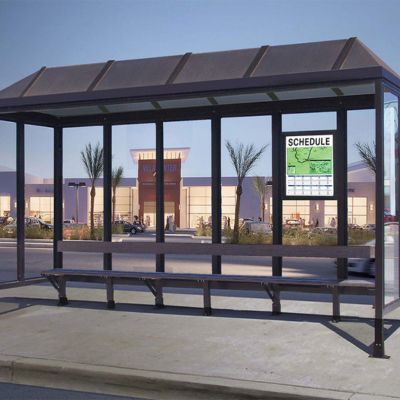
Effective bus stop location is vital for urban planning. Properly placed bus stops enhance accessibility, improve transit efficiency, and contribute to a more livable city. Urban planners must carefully consider various factors to ensure optimal bus stop placement. Here are some planning tips to provide bus stops that benefit the transit system and the community it serves.
Bus Stop Placement
Bus stop placement directly affects a transit system’s efficiency and usability. Prioritize locations that maximize passenger convenience and minimize traffic flow disruptions. Key considerations include proximity to popular destinations such as shopping centers, schools, and residential areas. These locations provide increased demand for public transit, leading to successful transit usage rates. Additionally, planners must account for safety by avoiding placements near busy intersections or areas with heavy pedestrian traffic.
Bus Stop Distance
Deciding the distance between bus stops is another critical aspect of transit planning. Stops that are too far apart may discourage usage due to the increased walking distance, particularly for individuals with mobility challenges. Conversely, stops that are too close together can lead to inefficiencies, such as longer travel times and increased fuel consumption. Urban planners must find a balance that provides convenient access while maintaining operational efficiency. A spacing of 400 to 600 meters (approximately 0.25 to 0.37 miles) is ideal in urban areas, but this can vary based on specific community needs and urban density.
Bus Stop Accessibility
Accessibility is a paramount concern in bus stop planning. Stops should comply with the Americans with Disabilities Act (ADA) standards, ensuring they are accessible to all passengers, including those with limited mobility. This includes features such as curb cuts, ramps, and tactile paving to assist visually impaired individuals. Urban planners should also ensure sidewalks and pathways leading to the bus stop are well maintained and obstacle-free. Incorporating real-time information systems can further enhance accessibility by providing passengers up-to-date information on bus arrival times and service changes.
Bus Shelter Design
Bus shelter design plays a significant role in passenger comfort and safety. Shelters should provide protection from the elements, adequate seating, and lighting to ensure a comfortable and secure waiting environment. Planners should consider the local climate when selecting materials and designing the shelter to ensure durability and ease of maintenance. Shelters can also function as community assets by incorporating aesthetic elements that reflect the local culture and environment. Furthermore, incorporating elements such as waste bins, bike racks, and public art into shelters can enhance the overall passenger experience and encourage greater public transit use.
Strategic bus stop planning is a critical component of urban development. Considering these important factors for bus stop placement can impact the efficiency of the transit system and the overall livability of a city. By prioritizing these factors, urban planners can create a more effective, accessible, and enjoyable transit experience for all residents.
If you’re responsible for bus or other public transportation amenities, consider prefabricated bus stop shelters from Handi-Hut to create a comfortable and convenient space for riders. We carry a wide range of bus stop shelters, so you can find the perfect design to suit your community.
